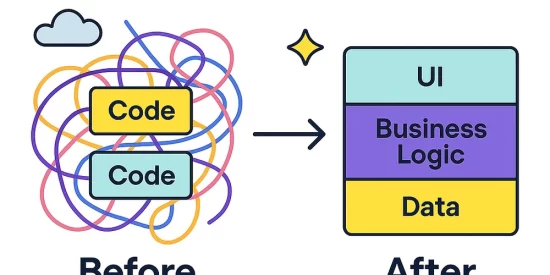“We should refactor the whole thing…”
I’ve heard this line more times than I can count — and honestly, most of those refactors failed.
Not because refactoring is a bad idea. But because they were done wrong.
📉 Why They Fail
Here are the top reasons I’ve seen (and experienced):
-
No clear target architecture
“We just want it cleaner” is not a plan.
-
Lack of test coverage
If you don’t have a safety net, every change is a risk.
-
Big-bang rewrites
Trying to change everything at once = chaos.
-
Team misalignment
If everyone has a different definition of “clean,” good luck.
✅ How to Do It Right
If you want your refactor to succeed, start with these:
-
Define the end goal
What will the architecture look like after refactoring?
-
Refactor incrementally
Small, focused changes are easier to test, review, and roll back.
-
Write tests first
Ensure you’re not breaking things while cleaning things up.
-
Align the team on standards
Agree on patterns, formatting, naming — everything.
💡 My Take
The best refactors I’ve seen had these 3 things:
- A clear vision
- A solid test suite
- A well-communicated plan
Refactoring without those? You’re just rewriting code and hoping for the best.
🙋 Your Turn
Have you ever done a big refactor?
- Was it painful or satisfying?
- Did you have the plan and tests?
- Or was it more like “rip it out and hope”?
Let’s share some refactor war stories in the comments. 👇





